- Home
- Peter Ackroyd
London Under Page 3
London Under Read online
Page 3
The presence of holy water induced various forms of theatre and ritual in its vicinity, perhaps in memory of earlier water cults and ceremonies. The Clerks’ Well and the Skinners’ Well close to one another in Clerkenwell, for example, were the site of the London mystery plays in the late medieval period. The well of the clerks can still be seen, behind a glass window at the turning of Farringdon Lane into Clerkenwell Green. Some broken stone steps lead down to the well, from which many generations of pilgrims or travellers drank. “The water,” in the words of an eighteenth-century antiquarian, “spins through the old wall. I was there and tasted the water, and found it excellent, clear and well tasted.” Close by was a spring known as Black Mary’s Hole, the name believed to be a degeneration of Blessed Mary’s Well; the whole process of naming is an apt token of the darkening fate of London’s springs. Other derivations have been suggested. The well may have belonged to the convent of St. Mary’s, Clerkenwell, where the Benedictine nuns wore their familiar black habits. It may have been the property of a woman, Mary, who owned a black cow or alternatively by a black woman of the same name. It may have been dedicated to the “black Madonna,” the Virgin depicted in the early medieval period with dark skin. The names of London are mixed and mingled, compounded by folklore and superstition. Black Mary’s Hole was believed to be buried for ever, but in 1826 its wood covering disintegrated and a large hole appeared in the footpath. The neighbourhood of Islington, of which Clerkenwell is a part, was the site of many such wells. Hence the verse of a confirmed invalid who had tried the waters of various spas:
But in vain till to Islington’s waters I came
To try if my cure would add to their fame.
St. Clement’s Well was known as Holy Well, giving its name to Holywell Street, where pornographic literature was sold in the nineteenth century. “It is yet faire and curbed square with hard stone,” John Stow wrote, “and is always kept cleane for common use. It is always full and never wanteth water.” Holywell Street was demolished in 1901, as a result of the “improvements” that led to the building of Kingsway, but the site of the well can still be located. It lies on the spot just north of the Strand beside Clement’s Inn. On Holy Thursday or Maundy Thursday newly baptised converts, wearing white robes, would congregate about the well. Another holy well lies close by, now in the basement of Australia House on Aldwych, that may have confused the pilgrims.
St. Bride’s Church, in Fleet Street, rises above the site of St. Bride’s Well; the name of Bridewell of course derives from the same source. It was once one of the great spiritual centres of London, but was diminished to secular use by the end of the sixteenth century. It met its end on the occasion of the coronation of George IV, in the summer of 1821, when thirsty visitors are said to have drained it. A plane tree by the south-east corner of the church marks the spot. A holy well was located in Hyde Park, St. Agnes’s Well, where sick children were immersed. A square metal panel, in front of the pavilion of the Italian Gardens, is its only memorial.
Sadler’s Wells was originally a well serving the monks of St. John’s Priory, Clerkenwell, but its name derives from a more recent date. John Sadler had in 1683 employed some workmen to dig for gravel in his garden, when one of their spades struck a flat stone supported by four oaken posts; beneath it was a large well of stone arched over and “curiously carved.” Here was found an apparently endless supply of mild chalybeate water—water rich in iron—that until recent times could be purchased in the Sadler’s Wells Theatre. It was also employed in the theatre’s air-cooling system. The well itself survives. It is of some interest that the theatre or “musick house” was established at the beginning of the eighteenth century and has continued its life ever since. In the nineteenth century it was described as the “Aquatic Theatre” and was known for the “real water effects” upon the stage. Other entertainments were on offer. One performer would eat a live cock, complete with feathers and innards, washed down with half a pint of brandy.
The “musick house” at Sadler’s Wells, in 1813 (illustration credit Ill.7)
Much of the London water springing to the surface was impregnated with various minerals imparted by the gravel and the clay, and so as a result innumerable spas or “spaws” were established in the eighteenth century to cure certain common ailments. A good mixture of water with iron, or magnesium sulphate, or sodium sulphate, “strengthens the Stomach, makes gross and fat bodies lean and lean bodies fleshy.” In the words of another contemporary pamphleteer, “this water taken internally would prevent or cure Obstructions and Tumours of the Liver, Spleen … also Flatus Hypochondriacus, Black and Yellow Jaundice, Scurvy and Cholerick Passion.” Chalybeate water, in particular, was a sovereign curative for those with skin diseases or diseases of the eye. Eyes and water have an affinity. That is the significance of the lachrymatory. In the nineteenth century the water was more commonly applied to mangy dogs.
An eighteenth-century street cry of London rang out with “any fresh and fair spring water here!” Something in the atmosphere of the wells encourages the ministrations of what has become the medical profession. The houses of fashionable doctors, in Devonshire Place and Upper Wimpole Street, lie directly above the wells and gardens of Marylebone Spa. But the waters all went back into the ground. The only uncontaminated water from a London spring, at the beginning of the twentieth century, was being drawn from Streatham Well. That also has now been buried.
The names remain as a token of past time. Spa Fields, opposite Sadler’s Wells, is now the site of a tower block. A public house in the immediate vicinity, the London Spa at the corner of Rosoman Street and Exmouth Market, was opened on 14 July 1685 by Robert Boyle. The eminent scientist might not have anticipated that, on the same site, a public house with the same name would stand at the beginning of the twenty-first century. In the winter of 1851 an ancient well was found beneath the yard of the Lamb public house in Lamb’s Conduit Street; the well has gone but the public house survives.
Wells and springs are places of transition, where the underworld rises out of the ground. They encourage song and dance; they are the site of ritual. The plethora of London names such as Spring Gardens, Well Walk and Wells Street testifies to the extent and variety of these waters. We also have Shadwell and Stockwell and Camberwell. It would be weary work to enumerate all the buried wells of London. It is enough to know that they once existed.
The Westbourne rises in Hampstead and makes its way to the Thames at Chelsea. On its route it passes through Kilburn and gathers strength before flowing southwards through Paddington towards Hyde Park. It once replenished the Serpentine, and that body of water still rests in the valley it created. The knight’s bridge was over the Chelsea reach of the Westbourne, giving its name to the neighbourhood. The area of Bayswater was also named after the river. Kilburn, or cyne-berna (royal stream), is another beneficiary.
On its journey to the Thames the Westbourne passes through a great iron pipe to be seen above the platforms of Sloane Square tube station. In the eighteenth and early nineteenth centuries it ran through desolate fields and muddy swamps, but the territory was drained and covered before being transformed into Belgravia. Eleven streets in Paddington are named after the river—among them Westbourne Grove and Westbourne Gardens—and Bourne Street in Chelsea follows its course. It is often possible to track the path of the river by contemplating the street names on the outer surface. The Westbourne is now known as the Ranelagh sewer.
The Effra descends from Norwood, South London, making its way through Dulwich and Herne Hill before entering Brixton; it was 6 feet in depth here, and from bank to bank measured 12 feet.
It was wide enough to support large barges, and King Canute is recorded to have sailed up the Effra to Brixton. The name itself derives from yfrid or torrent. At the beginning of its descent, in Norwood, there still stands an old cottage named “The Boathouse.” On the Brixton Road small bridges connec
ted the houses with the road itself; the grass verges on either side of the road still mark the banks of the river. The old riverscape survives. There is a Water Lane and a Coldharbour Lane and a Rush Common in Brixton. The Effra then ran past what is now the south side of the Oval before leaving Kennington and reaching Vauxhall. A stage or platform was erected, during the mid-Bronze Age, at the point where the river flows into the Thames; the place where rivers meet was deemed to be holy.
The Westbourne tumbling from the Serpentine in 1800 (illustration credit Ill.8)
The history of the Effra is representative. Its upper parts were relatively clear and clean; in the latter part of the eighteenth century it was a swiftly running and amiable stream guarded by laburnums, hawthorns and chestnut trees. As it approached the suburbs of the city, however, it gradually became fouled until it was little more than a sewer. It was eventually covered by brick and building. There is still a small open stretch in Dulwich, and the Effra overflows into areas of Dulwich Park and Dulwich Common. Although it is largely concealed it can still flood its neighbourhood at times of heavy rain; the adjacent area was last inundated in the summer of 2007. Further downstream it can only be entered through the sewers of the Effra Road in Brixton, but there have been suggestions that parts may be opened up once more as a fitting addition to the London environment.
The Walbrook lies to the north, in the City of London, where a narrow street is still devoted to its memory. John Stow was already mourning its disappearance at the end of the sixteenth century. “This water-course,” he wrote, “having divers bridges, was afterwards vaulted over with brick, and paved level with the streets and lanes where through it passed; and since that, also houses have been built thereon, so that the course of Walbrooke is now hidden underground, and thereby hardly known.”
We can revive that course in the imagination. It rose in the vicinity of Holywell Street in Shoreditch, and indeed that sacred spring may be its source. There are signs of a Roman shrine at this spot. It then ran southwards towards the city on a course now marked out by Curtain Road and Blomfield Street; it passed across the wall just to the west of the church of All Hallows; an aqueduct was found here, buried at a depth of 20 feet. An arch was found at its southern end lined with moss; at some time, therefore, the channel had been above the ground.
From this point the river flowed south-west until it reached Tokenhouse Yard, a little to the north-east of the Bank of England; it may have been enlarged by one or two small tributaries and, when it was still visible, at least four bridges were built across it. The church of St. Margaret Lothbury was also erected on vaults above the flowing water. The Walbrook then turned slightly to the south-west and coursed beneath the Bank, from where it ran beneath St. Mildred, Poultry. The church, now demolished, was rebuilt on an arch over the river in 1456. In 1739 the Walbrook was described as “a great and rapid stream … running under St. Mildred’s church steeple at a depth of sixteen feet.” The Bank and the Mansion House are built upon the alluvial deposits from the river.
From St. Mildred, Poultry, the river ran south beside the Roman temple of Mithras that had been erected on the bank beside it. It then descended towards the Thames on a path 50 yards to the west of the present street named Walbrook, where it ran beside St. Stephen upon Walbrook. It then flowed down to Cloak Lane, named after cloaca or sewer. The attachment of churches to the river—or of the river to churches—is confirmed by the fact that at Cloak Lane there stood another church, St. John the Baptist upon Walbrook.
It then ran down Dowgate Hill towards the Thames with such force that in 1574 a young man of eighteen tried to leap across it but was carried away by “such violent swiftness as no man could rescue or stay him till he came against a cart wheel that stood in the watergate before which he was drowned and stark dead.” These are the violent waters that now lie 35 feet under the ground. Yet they do mark the world above the ground. A sharp turn in the river’s course became Elbow Lane, later changed to College Street. A dip along Cannon Street, between Budge Row and Walbrook, still signals the valley through which it passed.
So the Walbrook began at a sacred well and touched at least six holy places in the course of its journey. Another testimony to its character may be found in the discovery of skulls deposited in its waters at some point in the first century. Forty-eight human skulls were found in the bed of the river, during excavations in the middle of the nineteenth century, and more recent investigation has shown that they were deliberately immersed without their lower jaws; the colour of the bones suggests that they had been exposed after death. It is very likely, therefore, that the Walbrook was the site for ritual activity. At the time of the immersion of the skulls it was some 12 feet in width but relatively shallow. It then fell into a decline, but was rescued for use in the eleventh and twelfth centuries when it was described as “a fair brook of sweet water”; the growth and intensification of London meant that, by the thirteenth century, it had become an open sewer full of dung and other refuse. By the sixteenth century it was largely covered. It had begun another phase of its long life.
Yet it still had its uses. It was an administrative boundary whereby according to Stow “the procedure, according to ancient usage of the City of London, is wont to be that eighteen men must be chosen from the east side of the Walebroke, and eighteen men from the west side” for various civic duties. Stow also reports that twelve wards lay on the west side of the river, and thirteen wards on the east. In its lower reaches, for example, it divided the wards of Dowgate and Vintry. Its etymology may be wealas, or stream of the Britons, encouraging speculation that the Walbrook separated the native Britons from the Roman administrators. But that must remain in the realm of theory only. Other London rivers acted as the boundaries of wards or parishes, and their invisible presence still marks a difference in atmosphere between adjacent City neighbourhoods.
The Tyburn springs up in Hampstead and journeys south through Swiss Cottage and Regent’s Park before it joins with a tributary and follows a meandering path into central London. The twists and turns of Marylebone Lane accurately plot its course. The primeval force of water has created these shapes, cutting its way through clay that has now become brick. Old sketches delineate the Tyburn in this part of its progress, flowing through fields with flowers and bushes beside its banks. If you look carefully enough you can still glimpse the hills and valleys of the original landscape, even though they are now covered by bricks and stone rather than trees and grass; they make up the contours of the modern city.
From Marylebone Lane the Tyburn follows a southward course across Oxford Street, where it then turns south-east into South Molton Lane; Brook Street is named after it. It then pursues a circuitous course through the purlieus of Mayfair before finally emerging into Down Street where naturally enough it descends into Piccadilly. Oxford Street was once known as the Tyburn Road, and Park Lane as Tyburn Lane; the river of course also gave its name to the gallows set up by Marble Arch. The name Marylebone is derived from the church of St. Mary by the bourne or brook.
The Tyburn then crosses Green Park, flows past Buckingham Palace, and runs through Victoria and Pimlico into the Thames by Vauxhall Bridge. This was until recent times an area of marsh and swamp, so that the waters of the Tyburn in the vicinity were not much used. In A Traveller’s Life (1982) Eric Newby recounts how he came upon the stream in 1963 and recalls that “the bottom of the Tyburn was littered with some bizarre sorts of jetsam which included that morning a fine pair of unmounted antlers, a folio Bible in the Welsh language, half a pram and an old bicycle.” Rivers seem to attract unwanted and dilapidated things; consigned to the water, they can be made to disappear. The upper reaches of the Tyburn were far more wholesome, and in the thirteenth century a conduit was built to carry the water through wooden pipes from Marylebone Lane into the City. It was eventually discharged at the great conduit in Cheapside.
Other lost rivers flow north of the Thames, among them Stamford Brook that rises at Wormwood Scrubs in East A
cton and falls into the Thames at Hammersmith. In its closing stages it becomes three streams, with myriad tributaries crossing and recrossing beneath the pavements unseen and unknown. Another river, Counter’s Creek, finds its source somewhere beside Kensal Green cemetery before passing through White City, Olympia and Earls Court; it reaches its end at Chelsea, close to Lots Road Power Station, where in the 1950s it was noticed as “a stagnant ditch with a few disheartened marguerite daisies and thistles growing beside the green slime.” On its route from Kensal Green Cemetery it passes close to Hammersmith Cemetery and Brompton Cemetery and Fulham Cemetery, perhaps out of atavistic attraction to the buried dead. Hackney Brook, in the east of London, also forms the northern boundary of Abney Park Cemetery. The buried river known only as the Black Ditch rose in Whitechapel.
Many people are fascinated by the course of the subterranean rivers; they track them, sometimes with maps and sometimes with dowsing rods, seeking for the life under ground. They pursue them as far as they can through unpromising surroundings of council blocks or shopping malls or derelict plots of marshy land. On stretches of their route the outer world is in mourning for its lost companion. A verse from Job may act as a summary: “Even the waters forgotten of the foot: they are dried up, they are gone away from men.”
The river walkers pace their journey slowly, re-creating a sense of time that has been lost in the contemporary city—or perhaps time is altered by the presence of the buried river. It may follow the speed of the water beneath the ground. Time itself does not matter in the presence of the lost river. The Tyburn, for example, flowed in prehistory just as it flows now; it joins past and present in a perpetual embrace. We might be in Coleridge’s “Xanadu”

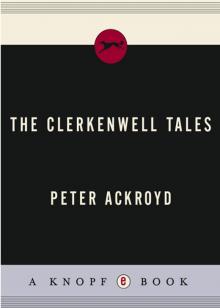 The Clerkenwell Tales
The Clerkenwell Tales The Canterbury Tales
The Canterbury Tales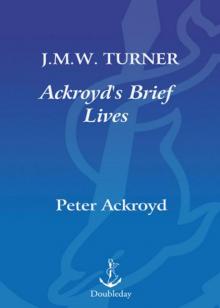 J. M. W. Turner
J. M. W. Turner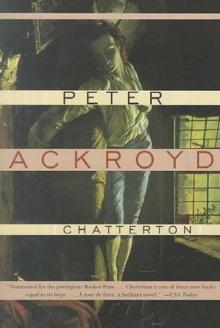 Chatterton
Chatterton The Canterbury Tales – A Retelling
The Canterbury Tales – A Retelling Alfred Hitchcock
Alfred Hitchcock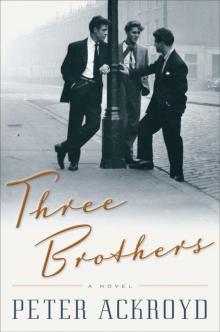 Three Brothers
Three Brothers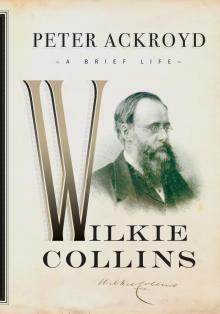 Wilkie Collins
Wilkie Collins Venice
Venice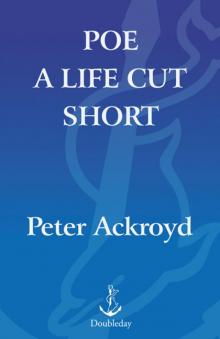 Poe
Poe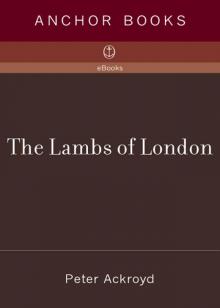 The Lambs of London
The Lambs of London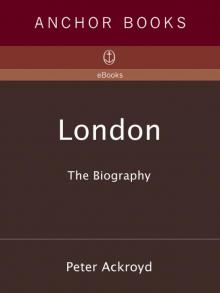 London
London Queer City
Queer City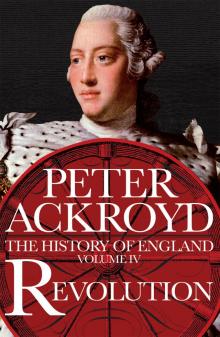 Revolution, a History of England, Volume 4
Revolution, a History of England, Volume 4 Venice: Pure City
Venice: Pure City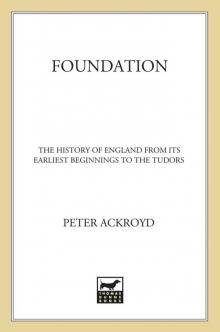 Foundation
Foundation Thames
Thames The Plato Papers
The Plato Papers The house of Doctor Dee
The house of Doctor Dee Rebellion: The History of England from James I to the Glorious Revolution
Rebellion: The History of England from James I to the Glorious Revolution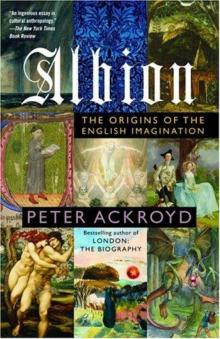 Albion: The Origins of the English Imagination
Albion: The Origins of the English Imagination The Fall of Troy
The Fall of Troy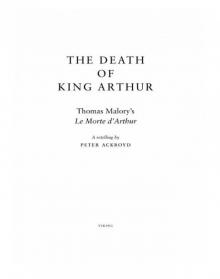 The Death of King Arthur
The Death of King Arthur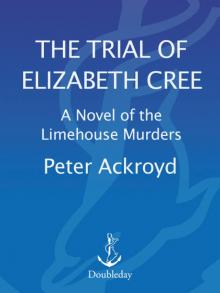 The Trial of Elizabeth Cree
The Trial of Elizabeth Cree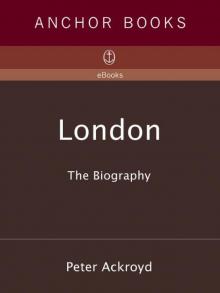 London: The Biography
London: The Biography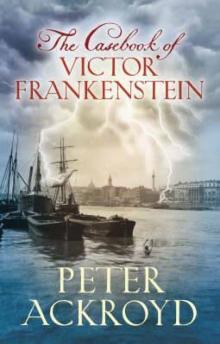 The Casebook of Victor Frankenstein
The Casebook of Victor Frankenstein Hawksmoor
Hawksmoor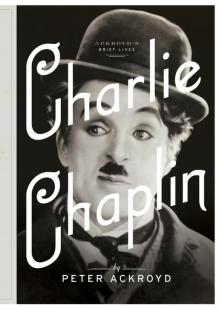 Charlie Chaplin
Charlie Chaplin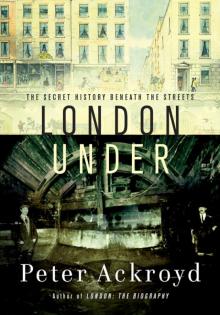 London Under
London Under